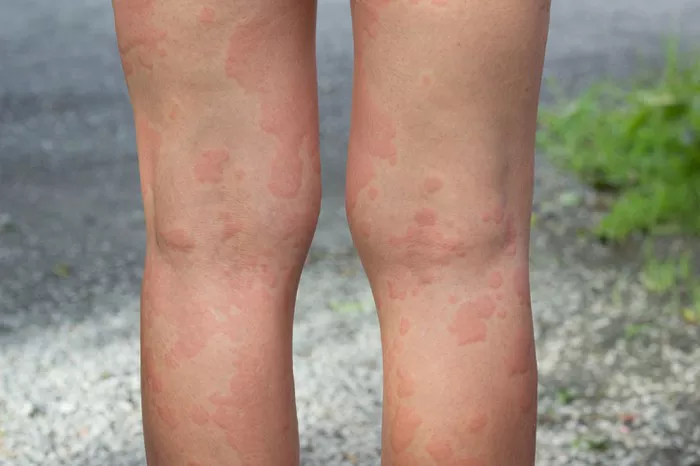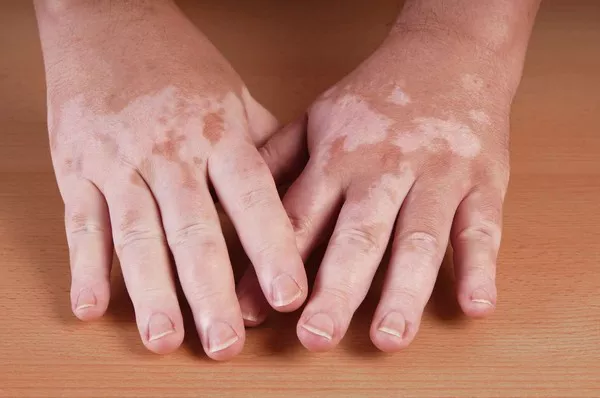Hives, also known as urticaria, are raised, itchy welts that can appear on the skin and affect any part of the body, including the legs. When hives develop on the legs, they can be particularly uncomfortable due to friction from clothing and constant movement. Dealing with hives on the legs requires a comprehensive approach that addresses both the underlying causes and immediate symptoms. This article explores various strategies to manage and alleviate hives on the legs effectively.
Understanding Hives on Legs
Hives are characterized by their sudden appearance and disappearance, often within hours. They can vary in size and shape, and they may be red, pink, or flesh-colored. Hives on the legs can be triggered by various factors, including:
- Allergens: Common allergens such as certain foods, medications, insect stings, or pet dander can lead to hives on the legs.
- Physical Irritants: Friction, pressure, or scratching can cause hives to develop, particularly on the legs where clothing rubs against the skin.
- Temperature Changes: Exposure to extreme temperatures, such as heat or cold, can provoke hives.
- Stress: Emotional stress can trigger hives in susceptible individuals.
Identifying the specific trigger for hives on the legs is essential for effective management.
Treatment Options for Hives on Legs
When hives appear on the legs, several approaches can provide relief and promote healing:
1. Over-the-Counter Antihistamines
Antihistamines are often the first line of defense against hives. They work by blocking the effects of histamine, a chemical released during an allergic reaction that causes itching and swelling. Non-drowsy options such as cetirizine or loratadine are suitable for daytime use, while sedating antihistamines like diphenhydramine can be used at night to reduce itching and promote sleep.
2. Topical Treatments
Calamine lotion or over-the-counter hydrocortisone cream can help soothe itching and reduce inflammation associated with hives on the legs. Applying these directly to the affected area can provide immediate relief.
3. Cool Compresses
Applying a cool, damp cloth or an ice pack to the hives can help alleviate itching and reduce swelling. Avoid hot water or heating pads, as heat can worsen symptoms.
4. Avoid Triggers
Identifying and avoiding triggers is crucial in managing hives. Keep a diary to track activities, foods, or environmental factors that coincide with outbreaks. This can help pinpoint the specific triggers causing hives on the legs.
5. Clothing Choices
Wearing loose-fitting clothing made of natural fibers like cotton can minimize irritation and allow the skin to breathe, reducing the likelihood of hives developing on the legs due to friction.
6. Moisturize Regularly
Keeping the skin well-moisturized can prevent dryness and reduce the likelihood of hives. Opt for fragrance-free, hypoallergenic moisturizers to minimize the risk of irritation.
7. Stress Management
Practicing relaxation techniques such as yoga, meditation, or deep breathing exercises can help reduce stress levels, which in turn may decrease the frequency and severity of hives outbreaks.
When to Seek Medical Attention
While most cases of hives on the legs can be managed with home remedies and over-the-counter treatments, certain situations require medical attention:
1. Severe Symptoms: If hives are accompanied by difficulty breathing, swelling of the face or throat, dizziness, or nausea, seek immediate medical attention as these could be signs of a severe allergic reaction.
2. Persistent Hives: If hives on the legs persist for more than a few days despite home treatment, consult a healthcare professional. They can help identify underlying causes and prescribe stronger medications if needed.
3. Frequent Recurrences: Recurrent hives that significantly impact quality of life may warrant evaluation by an allergist or dermatologist to identify triggers and develop a comprehensive management plan.
Conclusion
Hives on the legs can be uncomfortable and disruptive, but with the right approach, they can be effectively managed. By identifying triggers, using appropriate treatments, and making lifestyle adjustments, individuals can find relief from hives and prevent future outbreaks. If symptoms persist or worsen, consulting a healthcare professional is recommended to determine the underlying cause and receive personalized treatment options. With proactive management, individuals can regain control over their skin health and enjoy a better quality of life free from the discomfort of hives on the legs.
Related Topics:

























